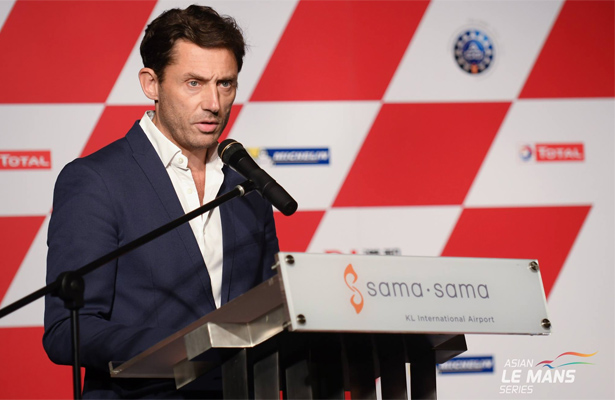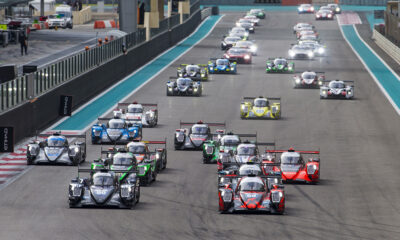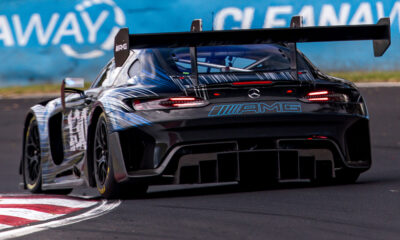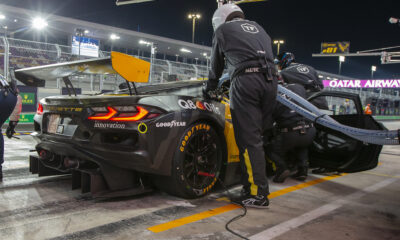
Photo: Asian LMS
On the heels of a record-setting 2016/2017 season that delivered nearly 30-car grids, the Asian Le Mans Series is set for further growth this year, with additional LMP2 cars, the introduction of an all-Bronze LMP2 class and a refocused four-round calendar that will include the first-ever six-hour race.
Sportscar365 caught up with series Managing Director Cyrille Taesch-Wahlen to get his thoughts on the evolution and state of sports car racing in Asia.
What was the reason behind remaining with a four-round calendar for the 2017/2018 season?
“That decision was made after deep and strong conversations with the teams, and we thought that it was worth it, to defer the expansion of the calendar from four to five rounds by a year, and make this coming season’s grid even stronger than it was last year.
“It definitely establishes Asian Le Mans as the reference endurance racing series in Asia. We are building a premium series in Asia, and that is the goal.
“To get there, we need to make sure that all the teams are capable of following the pace, and to compensate a little bit the fact that we moved back to four events, having announced that we would do a six-hour race, it’s something that teams have welcomed so well. They are so happy and for them, this is excitement.”
With a number of European teams taking part in the series, and the opening round having originally been scheduled for early-to-mid October at Zhejiang, around the same time of the ELMS season finale, did that factor in the decision?
“It was part of the consideration, but the discussions we had with the teams involved were only those being a part of the Asian Le Mans Series, which includes European teams.
“These European teams that are interested in joining the Asian Le Mans Series, lots of them are running P3 or P2 cars and when it comes to the P3 cars it would have been a problem for them.”
This year’s 24 Hours of Le Mans saw a record 11 cars from eight Asian Le Mans teams on the grid. Are you proud of this achievement and the increased level of interest these teams have in Le Mans?
“It’s really positive and it’s a trend now, in all the countries we visit in Asia. In China, more and more teams have now clearly put Le Mans on their to-do list, and they want to tick the box ASAP. It’s really something which is happening.
“As a matter of fact, we have some of the other Asian Le Mans teams that have already been competing at Le Mans in the past, like AAI, they are more than eager to be able to come back. They are working hard to make sure they will be competitive in the GT field in the coming season, and to get a chance to get the invitation.”
For you, is it good to see a team like Clearwater stepping up the ACO Pyramid into the WEC full-time?
“Of course, because this is what it is meant for. The ACO is the only racing organization in the world providing two FIA World Championship titles at the top of its pyramid, in Prototypes and in GTs.
“Teams coming from continental series, namely Michelin Le Mans Cup or ELMS or the Sprint Cup in Asian Le Mans, they know that they can grow and go up the ladder to the top.
“For us, seeing teams coming from the continental series to the WEC makes perfect sense. It’s an achievement and it’s happening to teams entering the ELMS anyway, so it has to be from Asia as well. It is very important.”
With the Blancpain GT Series Asia emerging in the region, will you be working with the SRO to avoid date clashes?
“We announced our calendar first and we previously had a gentleman’s agreement with GT Asia and it worked perfectly. I don’t see any reason why we won’t be able to work this way again and in the future.
“In Zhuhai last year, we had 15 GT3 cars, and what Le Mans is about is to combine prototypes and GT cars on the same grid. For us and the ACO, GT3 is very important for us. We deal with prototypes as much as GT, and our goal is to get a perfectly balanced grid, as we did last year.
“Talking about Asian teams running GT3 cars, lots of those entering Blancpain [GT Asia] this year are GT Asia competitors in the past. They are aiming to be able to do multiple series to keep the mechanics busy and make more business, and it makes sense.
“That’s the reason why we should work towards harmonization. They are customers and [we should] make sure that these teams can run both championships.
“It doesn’t make any sense, in my opinion, to fight against each other, when we need to grow this market together in a sustainable way. The only way for teams to be able to do that is to avoid as much as possible the calendar overlaps and date clashes.”
What’s your overall take on the sports car racing market in Asia right now?
“I would say that the market is definitely booming and growing, not only on the team side but the number of race tracks that are being built in Thailand, Taiwan, China and so on. This is all very good.
“The number of teams capable of affording the cost of a full season is not booming that fast. It will come, for sure, and that is one of the reasons why we are taking all these parameters and teams’ considerations into deep consideration because we need to make sure that everybody can grow at the same pace.
“The market is booming, definitely, but it’s not something that will happen in six months. We’re here for the long run anyway, so we have time and we work very hard. The ACO is really working towards delivering endurance racing for Asia.”

























